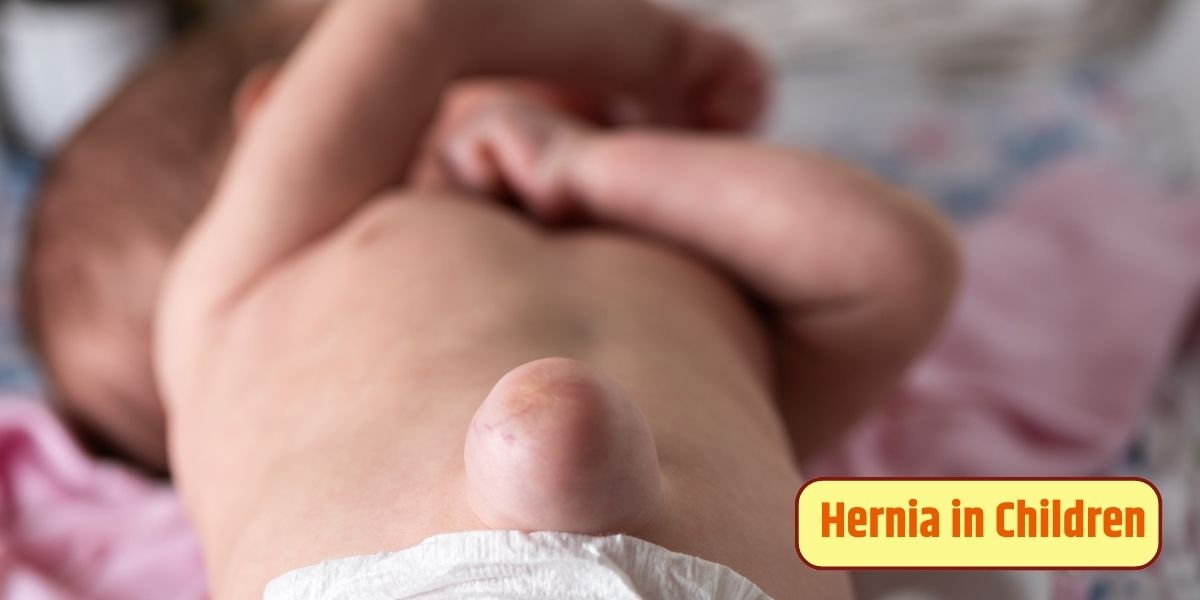A hernia is a condition where there’s a defect or weakness in the abdominal wall, allowing tissue (typically intestines or fat) to protrude and cause a bulge. While hernias are more common in adults, they can also affect children and babies. Let’s explore the differences between hernias in children and adults:
Types of Hernias:
Inguinal Hernias:
-
- Children: Inguinal hernias are common in babies and children, occurring in about 1% to 5% of infants. They often present as small bulges in the groin and may extend into the scrotum or labia. Most inguinal hernias in children are indirect, caused by an opening in the abdominal wall present at birth.
- Adults: Inguinal hernias rarely affect adults. They usually develop during adulthood due to factors like age, overexertion, sports, or heavy lifting. These are typically direct inguinal hernias.
Umbilical Hernias:
-
- Children: Umbilical hernias occur where the umbilical cord was once attached at the navel (belly button). They happen when the muscles around the belly button (umbilical ring) fail to close after the leftover umbilical cord falls off after birth. Boys and girls are equally affected.
- Adults: Umbilical hernias in adults aren’t always serious but carry a greater risk of complications, often requiring surgery.
Other Types:
-
- Hiatal Hernia: A hernia in the upper stomach and chest.
- Incisional Hernia: Results from a past abdominal surgery incision.
- Epigastric Hernia: Small bulges occurring between the umbilicus and lower sternum. Unlike umbilical hernias, these won’t close spontaneously.
Incidence and Gender:
-
- Children: Inguinal hernias are more common in premature infants and occur 10 times more frequently in boys than in girls.
- Adults: Incidence varies based on lifestyle and risk factors.
Complications:
Incarcerated and Strangulated Hernias:
-
- Children: Sometimes, part of the intestine gets stuck in the abdominal opening (incarceration). If tissue remains incarcerated for long, strangulation may occur, cutting off blood supply. This is a surgical emergency and can be life-threatening.
- Adults: Similar risks apply.
Symptoms:
-
- Children: Hernias may appear as bulges, but symptoms can be subtle.
- Adults: Symptoms may include noticeable bumps or bulges.
What are the treatment options for hernias in children?
Hernias in children can be managed through various treatment options, depending on the type and severity. Let’s explore these options:
Observation and Monitoring:
-
- Small, asymptomatic hernias may simply be monitored without immediate intervention.
- Regular check-ups with a healthcare provider are essential to track any changes.
Non-Surgical Management:
-
- Hernia Trusses: These are supportive undergarments designed to hold the hernia in place. However, they are generally not recommended for children due to potential discomfort and limited effectiveness.
Surgical Options:
Open Hernia Repair:
-
- A traditional surgical method involving a single large incision.
- The protruding tissues (intestines or fat) are pushed back into place, and a synthetic mesh is stitched around the weak spot in the abdominal wall.
- Commonly used for inguinal hernias in children.
Laparoscopy:
-
- A minimally invasive surgical procedure.
- Small incisions are made, and a camera and specialized instruments are inserted to repair the hernia.
- Suitable for both inguinal and umbilical hernias.
- Offers quicker recovery and less postoperative pain compared to open surgery.
Self-Care and Lifestyle Measures:
-
- Avoid heavy meals and lying down or bending immediately after eating.
- Maintain a healthy body weight to reduce strain on the abdominal wall.


